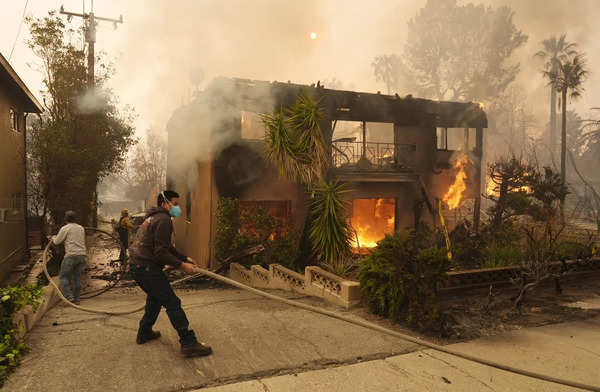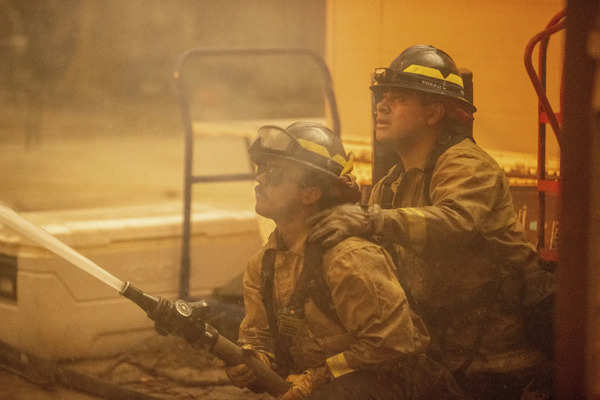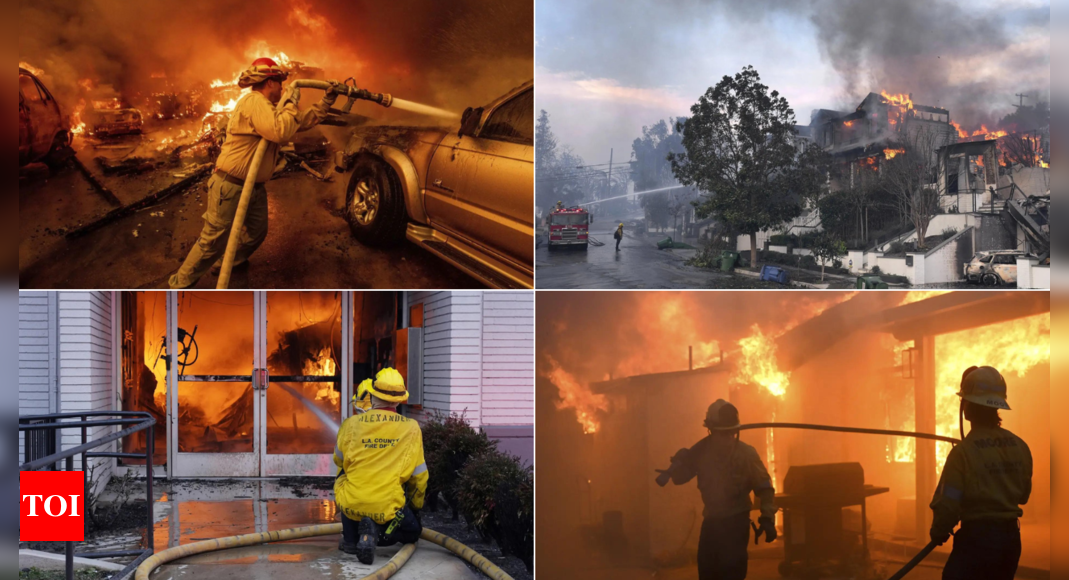a critic water shortage has severely impacted firefighting efforts in Los Angeles Pacific Palisades while devastating forest fires ravage the area.
According to a NYT report, firefighters, including Captain Kevin Easton, found themselves battling the blaze without adequate water supplies after local hydrants ran dry. “Bone dry, I couldn’t get any water out,” Easton said, describing the situation as they worked to protect the Palisades Highlands neighborhood.
As of Wednesday afternoon, water from hydrants remained unavailable, causing many homes in the area to burn.
The shortage was due to high-altitude water storage tanks and pumping systems designed to supply water to the area, which could not meet the overwhelming demand. “We’re looking at a situation that is simply not part of the design of any domestic water system,” said Marty Adams, former CEO of the Los Angeles Department of Water and Power.
Municipal water systems are designed to support multiple hydrants that fire trucks tap simultaneously. However, when fires, especially wildfires, spread quickly, they can overwhelm the system.

Pedestrians help a firefighter stretch a hose as an apartment building burns in the Altadena section of Pasadena, California (AP Photo)
The Pacific Palisades fire is a case in point, as it devastated neighborhoods and depleted storage tanks much faster than anticipated. The system was designed for fires that could consume a few homes, not hundreds. “If this is going to be a norm, there will have to be new ideas about how systems are designed,” Adams added.
When the fire spread, the water storage tanks were empty: the first tank was emptied quickly, followed by the second and third after a few hours. Janisse Quiñones, general director of the city’s water department, said the excessive demand for water during the fire exhausted the system, leaving less water available for the tanks.
Despite the water shortage, Los Angeles Fire Department Chief Kristin M. Crowley said firefighters adapted to the circumstances. “Right now, we are not using the hydrants,” Crowley added.
Instead, firefighters relied heavily on air support, such as retardants and water drops, which were initially unavailable due to high winds.
In addition to the water crisis, strong winds caused the fire to spread unpredictably, making suppression efforts even more difficult. Chad Augustin, chief of the Pasadena Fire Department, said that even with more water, erratic winds, which carried embers miles away from the fire, were the main reason for the fire’s rapid spread.

Firefighters unite to battle the Eaton Fire in Altadena, California (AP Photo)
The participation of the private sector also highlighted the seriousness of the situation. Real estate developer Rick Caruso, who deployed private firefighters to protect his properties in the area, criticized the lack of water in the hydrants, suggesting it indicated poor preparation.
The issue of aging infrastructure was also raised by local officials, such as Councilwoman Traci Park, who charged that the city’s water systems are underfunded and some pipes are more than 100 years old. “As our city has grown, we have not improved or expanded the infrastructure we need to support it,” he said.
Experts, including UCLA researcher Greg Pierce, emphasized that existing water systems are not equipped to handle the unique challenges posed by rapidly spreading wildfires. “Redesigning water systems to allow firefighters to fight a large wildfire would be enormously expensive,” Pierce said.
The situation raises broader concerns about the sustainability of rebuilding neighborhoods adjacent to wildfire-prone areas, a dilemma that has been increasingly debated across the West as climate change causes more intense fires. Easton said delays in receiving additional support, such as water delivery trucks, exacerbated the problem. “That also causes problems, because you get 500 gallons of water and you have a house that burns down, you knock it down a lot and then you have to refill it,” he said.
As fires continue to ravage the region, it is clear that the combination of an overwhelmed water system, inadequate resources and extreme weather conditions has exposed significant vulnerabilities in the city’s preparedness for such catastrophic wildfires.




